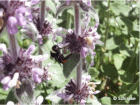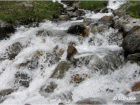Definitions of ecosystem services
These ecosystem services regulate climate, air quality, water quality, soil formation, pollination and waste assimilation, as well as mitigating natural risks such as erosion and invasive species.

|
Biological control
Natural control of parasites and diseases transmitted by vectors (e.g. birds, bats, wasps, frogs, fungi) that attack plants, animals and persons |
|
 |
Habitat for biodiversity
Supply of environments with food, water and shelter, essential for the survival of animals. Ecosystems provide different habitats essential for the life cycle of species. Habitats that host a large number of species are genetically diverse and are known as biodiversity hotspots |
|
 |
Pollination
Pollination is the main service provided by insects and is essential for the development of fruit, vegetables and seeds |
|
 |
Flood mitigation
Wetlands absorb water and forests reduce surface run-off, buffering the effects of extreme events and preventing floods |
|
 |
Erosion protection
Plant cover conserves soil (e.g. trees stabilise slopes and prevent leaching and erosion) |
|
 |
Water purification
Ecosystems filter and decompose organic residues and contaminants |
|
 |
Air purification
Vegetation regulates air quality by filtering harmful airborne substances |
|
 |
Water recharge
Ecosystems regulate surface flow of water, promoting recharge of aquifers and increasing water availability |
|
|
 |
Carbon sequestration
Trees and plants capture and store greenhouse gases: as they grow, plants remove carbon dioxide from the atmosphere and store it in their tissues. Forest ecosystems are therefore carbon reserves |
|
